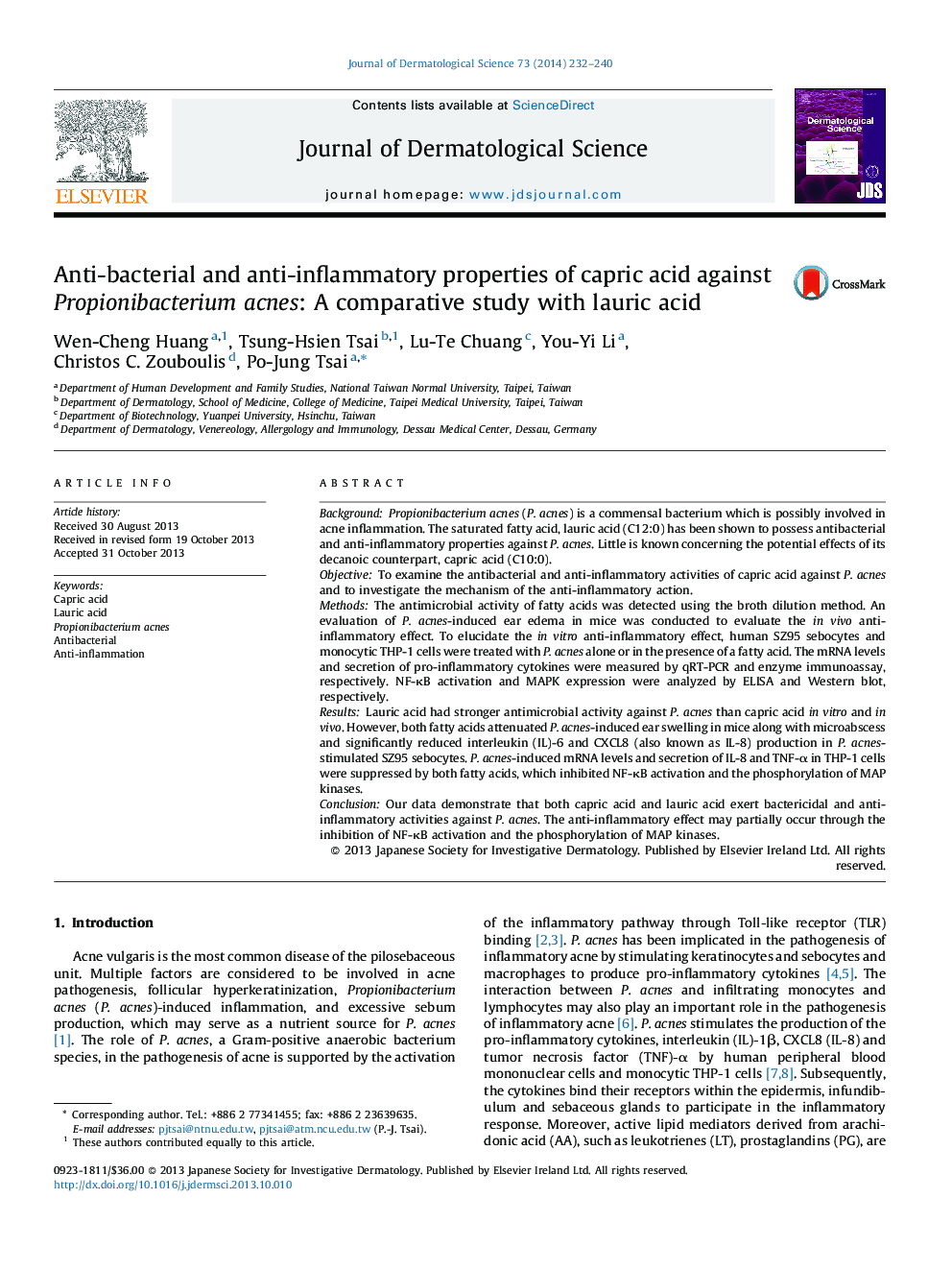| کد مقاله | کد نشریه | سال انتشار | مقاله انگلیسی | نسخه تمام متن |
|---|---|---|---|---|
| 3212788 | 1203198 | 2014 | 9 صفحه PDF | دانلود رایگان |
BackgroundPropionibacterium acnes (P. acnes) is a commensal bacterium which is possibly involved in acne inflammation. The saturated fatty acid, lauric acid (C12:0) has been shown to possess antibacterial and anti-inflammatory properties against P. acnes. Little is known concerning the potential effects of its decanoic counterpart, capric acid (C10:0).ObjectiveTo examine the antibacterial and anti-inflammatory activities of capric acid against P. acnes and to investigate the mechanism of the anti-inflammatory action.MethodsThe antimicrobial activity of fatty acids was detected using the broth dilution method. An evaluation of P. acnes-induced ear edema in mice was conducted to evaluate the in vivo anti-inflammatory effect. To elucidate the in vitro anti-inflammatory effect, human SZ95 sebocytes and monocytic THP-1 cells were treated with P. acnes alone or in the presence of a fatty acid. The mRNA levels and secretion of pro-inflammatory cytokines were measured by qRT-PCR and enzyme immunoassay, respectively. NF-κB activation and MAPK expression were analyzed by ELISA and Western blot, respectively.ResultsLauric acid had stronger antimicrobial activity against P. acnes than capric acid in vitro and in vivo. However, both fatty acids attenuated P. acnes-induced ear swelling in mice along with microabscess and significantly reduced interleukin (IL)-6 and CXCL8 (also known as IL-8) production in P. acnes-stimulated SZ95 sebocytes. P. acnes-induced mRNA levels and secretion of IL-8 and TNF-α in THP-1 cells were suppressed by both fatty acids, which inhibited NF-κB activation and the phosphorylation of MAP kinases.ConclusionOur data demonstrate that both capric acid and lauric acid exert bactericidal and anti-inflammatory activities against P. acnes. The anti-inflammatory effect may partially occur through the inhibition of NF-κB activation and the phosphorylation of MAP kinases.
Journal: Journal of Dermatological Science - Volume 73, Issue 3, March 2014, Pages 232–240
